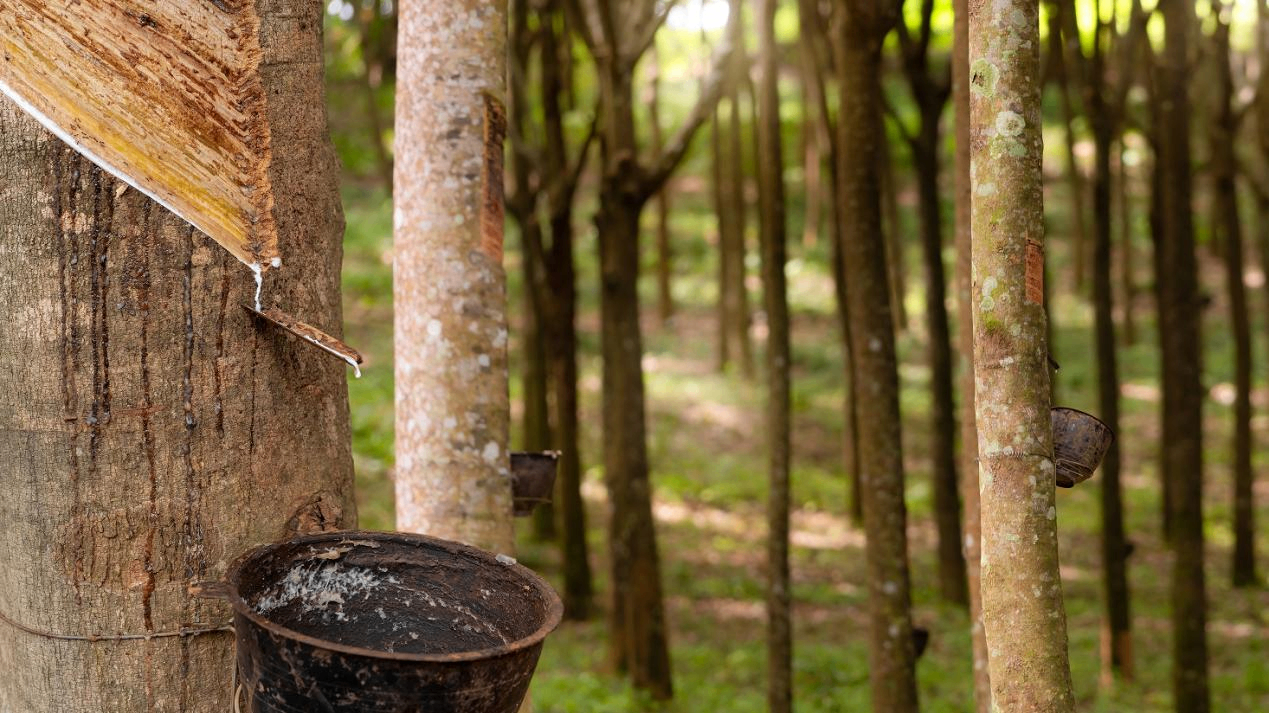Rubber wood mainly grows in tropical and subtropical regions. It is cultivated in Hainan, Yunnan, Guangdong and other places in China. At the same time, China also imports a large amount of rubber wood from major producing countries such as Thailand, Indonesia and Malaysia. Its growth cycle is relatively short, usually taking 22 to 29 years to reach maturity, which gives it certain resource advantages. Every year, the global output of rubber wood can reach 52 million cubic meters (in terms of round wood volume), and it can produce about 14 million cubic meters of sawn timber, ranking first among broad-leaved timbers.
Its color is light and elegant, mostly light yellowish-brown or yellowish-white, with clear and beautiful textures, which can be either delicate or bold, presenting a unique natural charm. In addition, rubber wood has good mechanical processing properties, making it easy to be fixed with nails, screws and glue. Its planing performance and nail-holding ability are also satisfactory. After polishing, it can obtain a better surface, which enables it to well adapt to various processing techniques during the production of artificial boards.
Image Source:699pic
In the artificial board industry, rubber wood is widely used. At present, although China's plywood industry shows a trend of a decrease in the number of enterprises and a slight decline in total production capacity, rubber wood still has a certain place in it. For some plywood products with specific requirements for texture and material, rubber wood can be used as a high-quality raw material to improve product quality. In the particleboard field, its total production capacity continues to rise, and rubber wood can be used as a raw material to enrich the variety of particleboards to meet different market demands. In the fiberboard industry, rubber wood can also contribute to the optimization of product performance with its own characteristics. The decorative panels made from rubber wood are gradually becoming a new favorite in the customized home furnishing industry. With the improvement of living standards, consumers' demand for solid wood panels has increased. The decorative panels made from rubber wood have advantages such as excellent strength, good stability, strong durability and high cost-effectiveness, which conform to the current market trend.
Instead of using chemical agents for anti-corrosion treatment, it only uses physical technology to achieve the purposes of insect prevention treatment and wood drying, making the wood emit a natural fragrance, shortening the production cycle and improving the dimensional stability. Modern wood processing technologies, such as numerical control carving and laser cutting, are also widely applied in the production of artificial boards from rubber wood, which improves production efficiency and enables products to have more complex and exquisite shapes.
However, the production of artificial boards from rubber wood also faces some challenges. Due to the high content of sugars, proteins, ash and other substances in rubber wood, it is prone to decay, mildew, blue stain and insect damage, which puts forward high requirements for protection measures during its storage and processing. In the market, although rubber wood has a cost-effectiveness advantage, some consumers have insufficient understanding of it and think that its material is not as good as traditional hardwoods, which affects the market promotion of artificial board products made from rubber wood.
Looking ahead, China's artificial board industry made from rubber wood has broad prospects. On the one hand, with the continuous growth of the domestic market's demand for environmentally friendly and sustainable products, as well as the deepening of consumers' understanding of rubber wood, artificial boards made from rubber wood are expected to have a larger market space. On the other hand, in international trade, as rubber wood is the largest single category of imported broad-leaved sawn timber in China, and the import volume is steadily increasing, this provides favorable conditions for China's artificial board products using rubber wood as raw materials to participate in international competition. The cooperation between Guangxi and Thailand in the establishment of a rubber wood raw material reserve base will further ensure the supply of raw materials and promote the development of the industry. Enterprises should seize the opportunities, increase investment in technology research and development, improve product quality and production efficiency, strengthen brand building and market promotion, fully tap the potential of rubber wood in the artificial board field, and achieve high-quality development of the industry.



